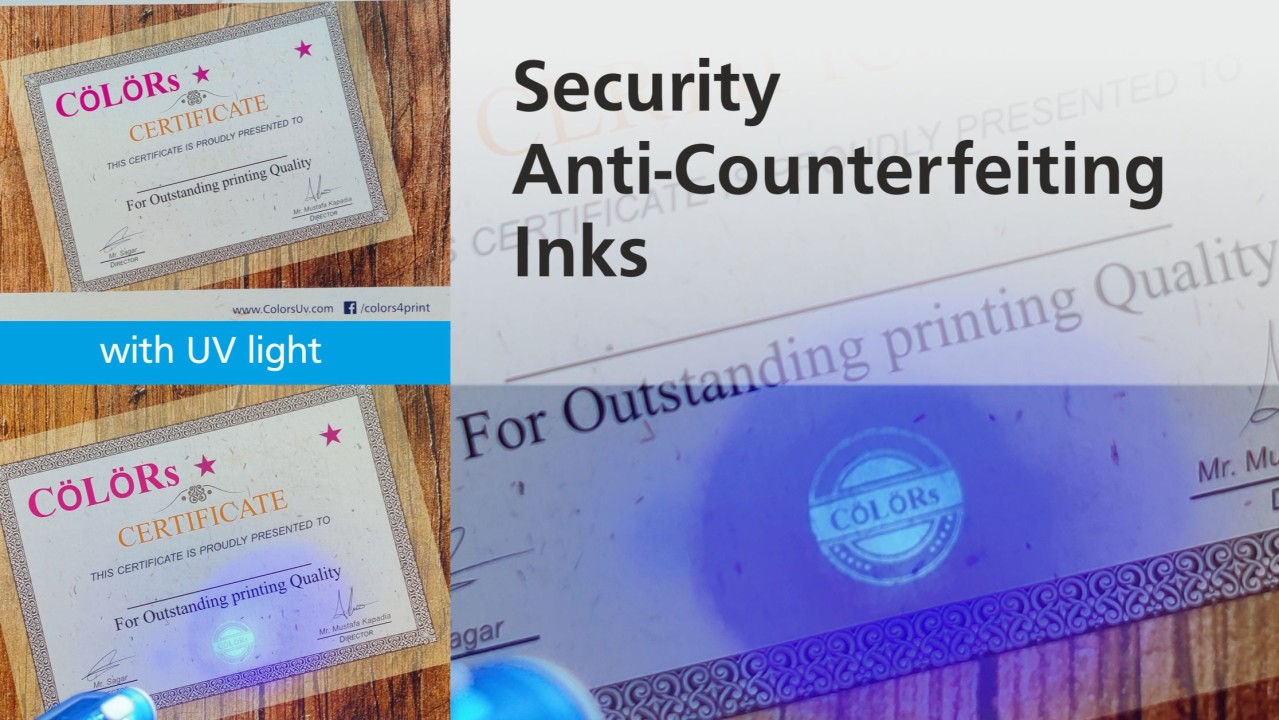Counterfeiting poses a significant challenge not only in industries such as pharmaceuticals and food products but also in the realm of controlling security documents. This threat cannot be completely eliminated but can be avoided to a very large extent by use of anticounterfeiting techniques. Speciality inks play a vital role in security printing and anti-counterfeiting measures across a variety of industries, from currency printing to product authentication. Within the brand protection industry, security inks are one of the oldest and most widely used anticounterfeiting techniques. These inks are designed with unique properties that make them difficult to replicate, helping to protect valuable goods and sensitive documents from forgery, tampering, or counterfeiting. Among the various printing processes, screen printing gives the most effective results.
Security inks provide two types of brand protection.
Overt Technology – Visually prominent and is readily recognisable. Eg OVI (optically variable inks), Photochromic, Thermochromic, Intaglio, Water sensitive, Phosphorent inks etc.
Covert Technology – Visually hidden and is undetectable without proper equipment Eg UV/Infrared invisible inks, Taggants, Conductive inks etc.
Many a times covert inks can be incorporated in overt inks for enhanced security measures.
Types of Speciality Inks
Optically Variable Inks (OVI): Made from special pigments which show specific colours at different angles creating a dynamic appearance. OVI is widely used in banknotes, passports, and brand protection, as the ink’s colour-shifting property is difficult to duplicate with standard printing methods.
Thermochromic Inks: These inks change colour when exposed to different temperatures, adding an extra layer of authentication that’s easy for consumers or inspectors to verify but challenging for counterfeiters to mimic.

Photochromic Inks: On exposing to sunlight these inks react with UV component and change colours. This can be easily identified and can be used for quick verification of product.
Water-Sensitive Inks: Certain compounds are sensitive to water and become transparent or fade when exposed to water, making them useful for tamper-evident labels and packaging.

Phosphorent Inks: These glow under specific lighting conditions and are often used in document security to embed hidden codes or marks.
UV/ IR Invisible Inks: These are only visible under ultraviolet or infra-red light and are commonly used in printing currency, passports, marksheets and certificates. Their covert nature makes them hard to detect and replicate.
Taggants: Some speciality inks include unique pigments with specific optical properties that can only be viewed under certain conditions, such as polarized light or laser light with specific wavelength adding further anti-counterfeiting measures.
Conductive inks: Inks made from certain pigments conduct electricity and make noise when circuit is complete. A special instrument is required to detect these inks and is mostly used in cheque book printing.
Combination of overt or covert inks with other authentication technologies like holograms and water mark in product packaging allows brands to trace and verify goods at every stage of the supply chain.
The development of new speciality ink technologies continues to evolve, with advances in nanotechnology, smart inks, and digital inkjet printing offering increasingly sophisticated solutions.
In conclusion, speciality inks provide a powerful tool in the fight against counterfeiting, offering advanced security features that protect both products and consumers.

Article by Dr. Mustafa Kapadia


